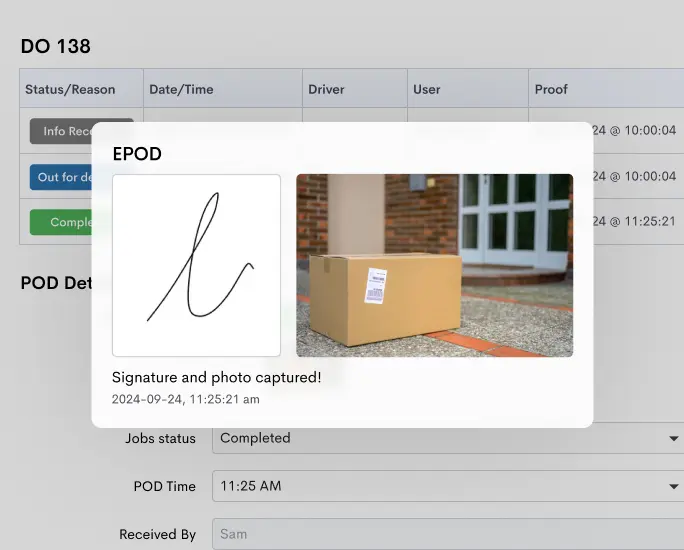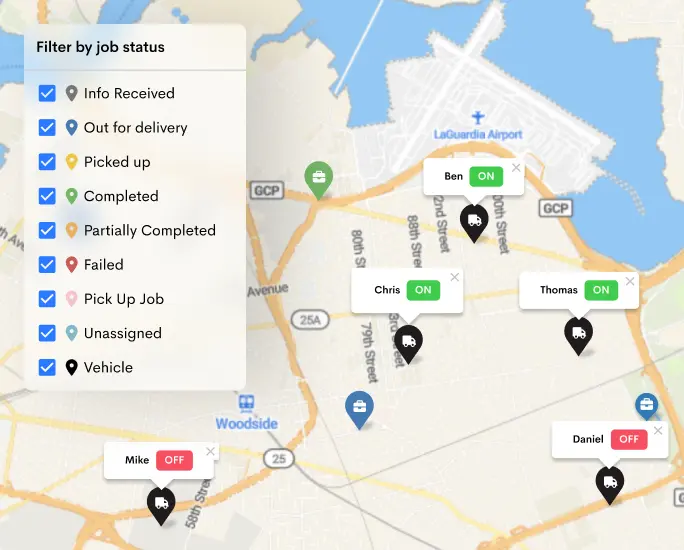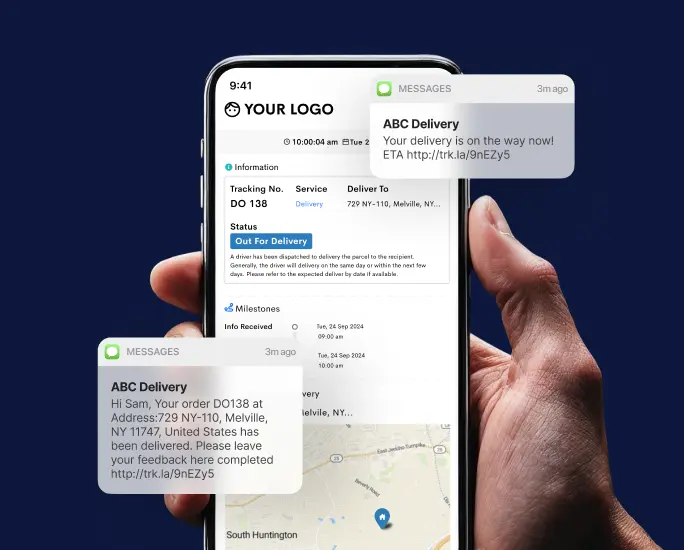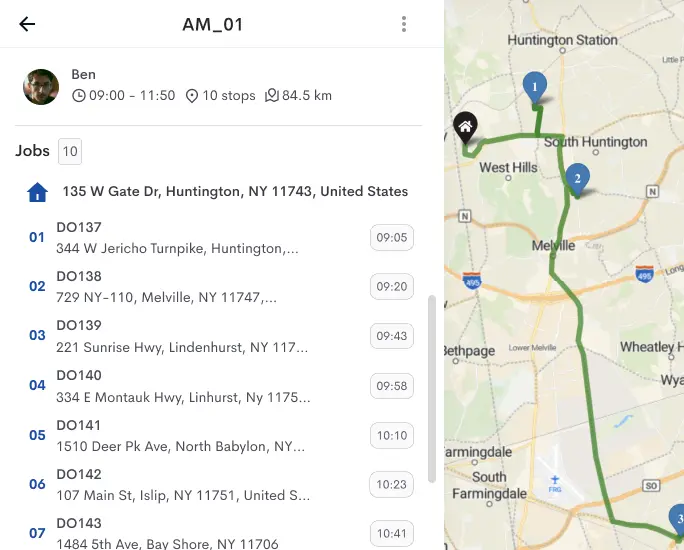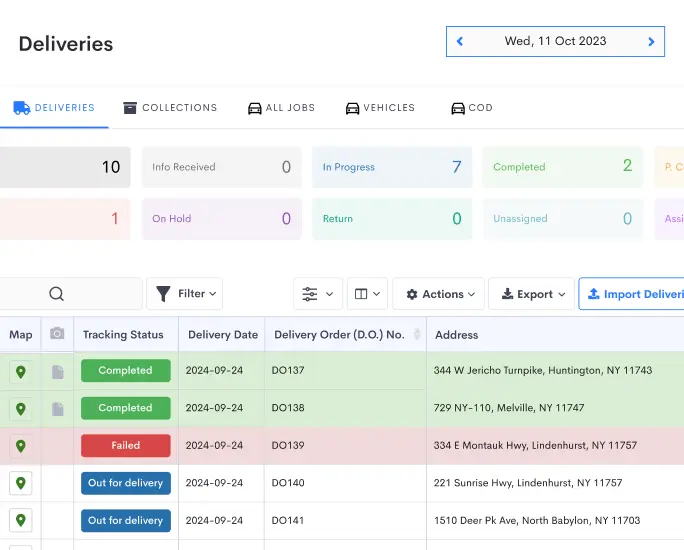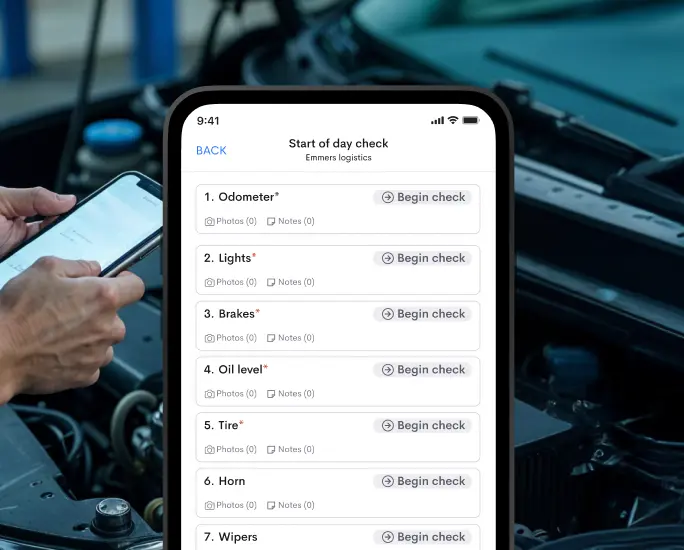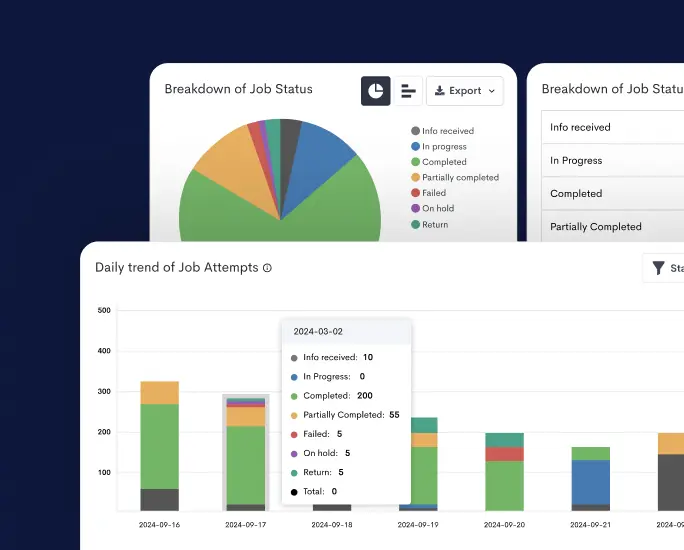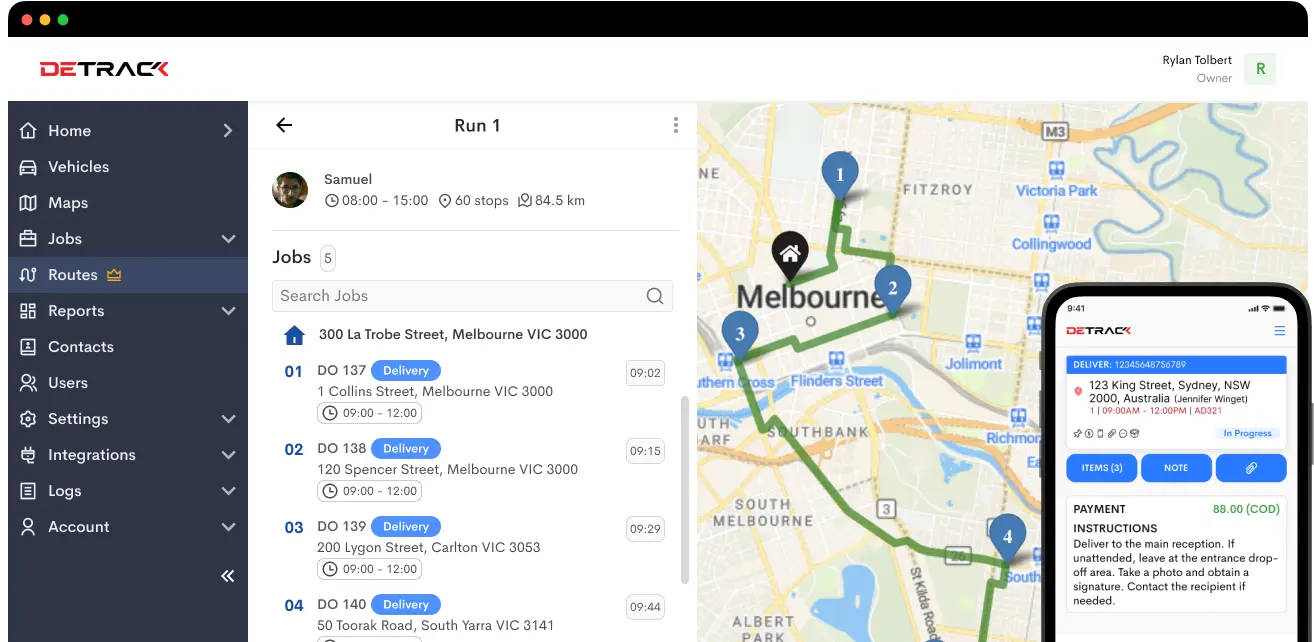Efficient logistics management is crucial for the success of any project. A well-developed construction logistics plan helps streamline operations, minimize delays, reduce costs, and enhance overall project efficiency.
Whether managing a small residential build or a large-scale commercial project, incorporating these eight key elements into your construction logistics plan will ensure smoother operations and successful project outcomes.
| Automate Your Logistics with Detrack Simplify your logistics operations with Detrack’s automated scheduling and route planning, saving you time and reducing the complexity of managing your deliveries. Try Detrack Today! |
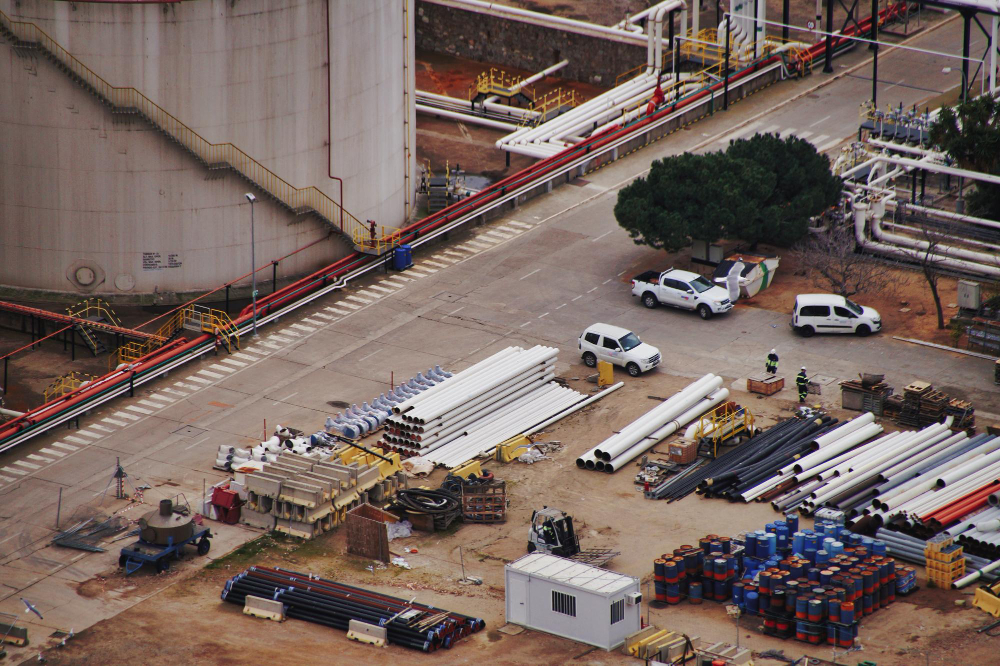
8 Key Elements of Developing a Construction Logistics Plan
1. Detailed Project Schedule
A comprehensive project schedule serves as the backbone of your logistics plan. It outlines the sequence of construction activities, identifies critical milestones, and sets deadlines for each project phase. A well-defined schedule helps coordinate various construction tasks and efficiently allocate resources.
To create an effective schedule, break down the project into manageable tasks and establish realistic timeframes for each. Incorporate buffer periods to account for potential delays, and regularly review and update the schedule to reflect any changes in project scope or timelines.
2. Resource Allocation and Management
Effective resource allocation is essential for maintaining project momentum. Resources in construction logistics include labor, equipment, delivery management software, materials, and subcontractors. Develop a plan to manage these resources efficiently by determining their availability, assigning specific tasks, and scheduling their use according to the project timeline.
Consider implementing a resource management system to track resource usage and availability. This will help prevent bottlenecks, reduce downtime, and ensure that resources are utilized optimally. Regularly review resource allocation to adjust for any changes or unforeseen circumstances.
3. Site Layout and Design
A well-thought-out site layout is critical for ensuring smooth operations and minimizing disruptions on the construction site. The site layout should include equipment positioning, materials storage areas, vehicle access points, and safety zones.
Design the layout with efficiency in mind, considering the flow of materials and personnel. Ensure that the layout allows for easy access to different areas of the site, reduces travel time, and minimizes potential hazards. Regularly assess and update the site layout as the project progresses to accommodate any changes.
4. Transportation and Logistics Coordination
Coordinating transportation and logistics is vital for managing the delivery and movement of materials and equipment. Develop a plan that outlines how materials will be transported to and from the site, including scheduling deliveries, managing transportation routes, and handling any logistical challenges.
Consider factors such as traffic patterns, site access restrictions, and delivery times to optimize transportation logistics. Establish clear communication channels with suppliers and transportation providers to ensure timely and accurate deliveries. Implement a tracking system to monitor the status of shipments and address any issues promptly.
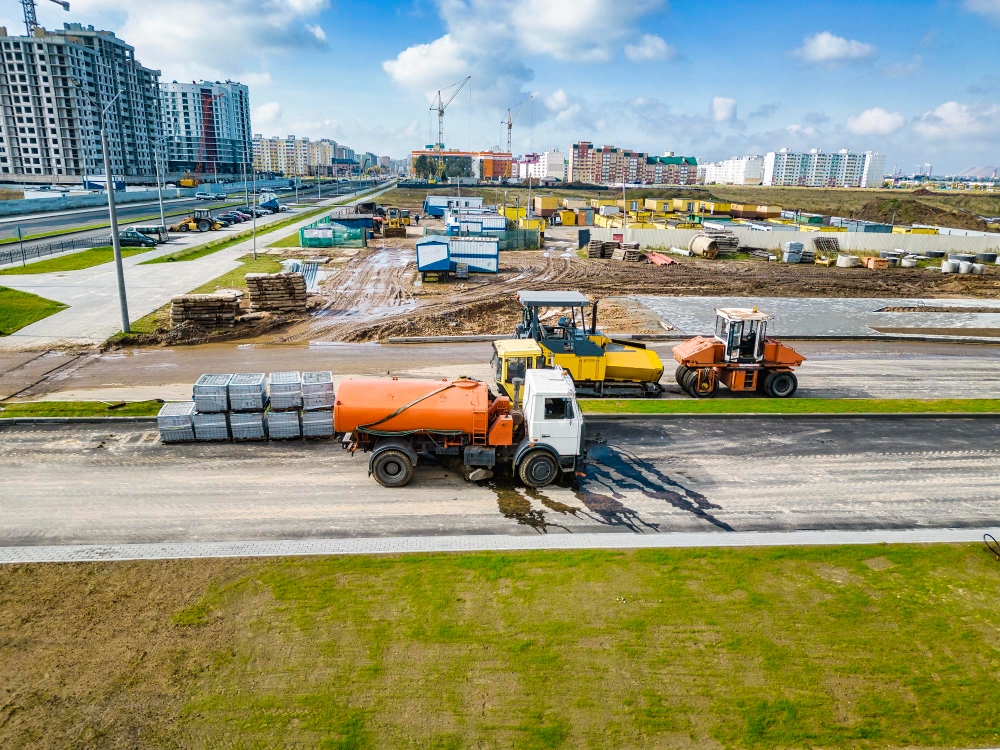
5. Safety and Compliance
Safety is a top priority in construction logistics. A comprehensive safety plan should be integrated into your logistics strategy to protect workers, equipment, and the site itself. Develop and enforce safety protocols, provide training for workers, and ensure compliance with relevant regulations and standards.
Conduct regular safety inspections and audits to identify potential hazards and address them proactively. Maintain accurate records of safety measures and incidents to demonstrate compliance and facilitate continuous improvement. Prioritize safety in all aspects of logistics planning to create a secure and efficient work environment.
6. Communication and Collaboration
Effective communication and collaboration are key to successful construction logistics. Establish clear communication channels among all stakeholders, including project managers, contractors, subcontractors, suppliers, and clients.
Regularly update stakeholders on project progress, changes, and any issues that may arise. Encourage open dialogue and collaboration to address challenges and ensure that everyone is aligned with project goals. Utilize communication tools and platforms to facilitate real-time information sharing and coordination.
7. Contingency Planning
Contingency planning is essential for managing unexpected challenges and minimizing their impact on the project. Develop contingency plans for potential risks such as supply chain disruptions, equipment failures, or adverse weather conditions.
Identify potential risks and assess their possible impact on the project. Create strategies for addressing these risks and establish protocols for implementing contingency measures. Regularly review and update contingency plans to ensure they remain relevant and practical throughout the project.
8. Performance Monitoring and Evaluation
Monitoring and evaluating the performance of your logistics plan is crucial for identifying areas of improvement and ensuring that the project stays on track. Implement key performance indicators (KPIs) to measure the effectiveness of various aspects of the logistics plan, such as resource utilization, adherence to the schedule, and safety compliance.
Review performance data regularly and assess whether the logistics plan is meeting project goals. Use this information to make informed decisions and adjustments to enhance efficiency and address issues. Continuous evaluation helps ensure the logistics plan remains effective and responsive to changing project needs.
Conclusion
Developing a robust construction logistics plan involves carefully considering various elements to ensure smooth and efficient project execution. By incorporating a detailed project schedule, effective resource management, a well-designed site layout, coordinated transportation logistics, safety measures, clear communication, contingency planning, and performance monitoring, you can enhance the overall success of your construction projects.
A well-structured logistics plan streamlines operations, minimizes disruptions, reduces costs, and promotes collaboration among stakeholders. Invest time and effort into developing a comprehensive logistics strategy, and your construction projects will benefit from improved efficiency, reduced risks, and successful outcomes.

